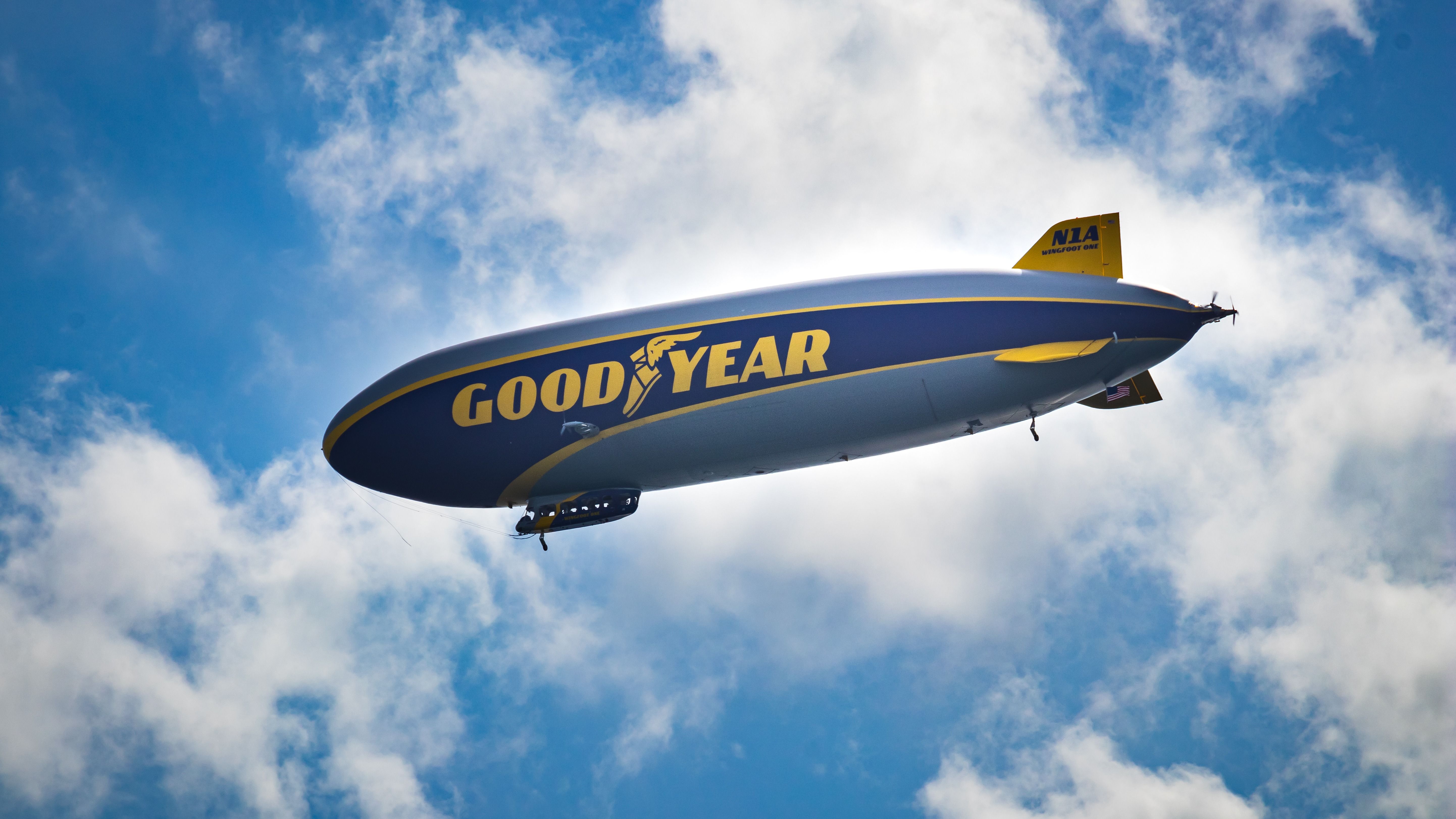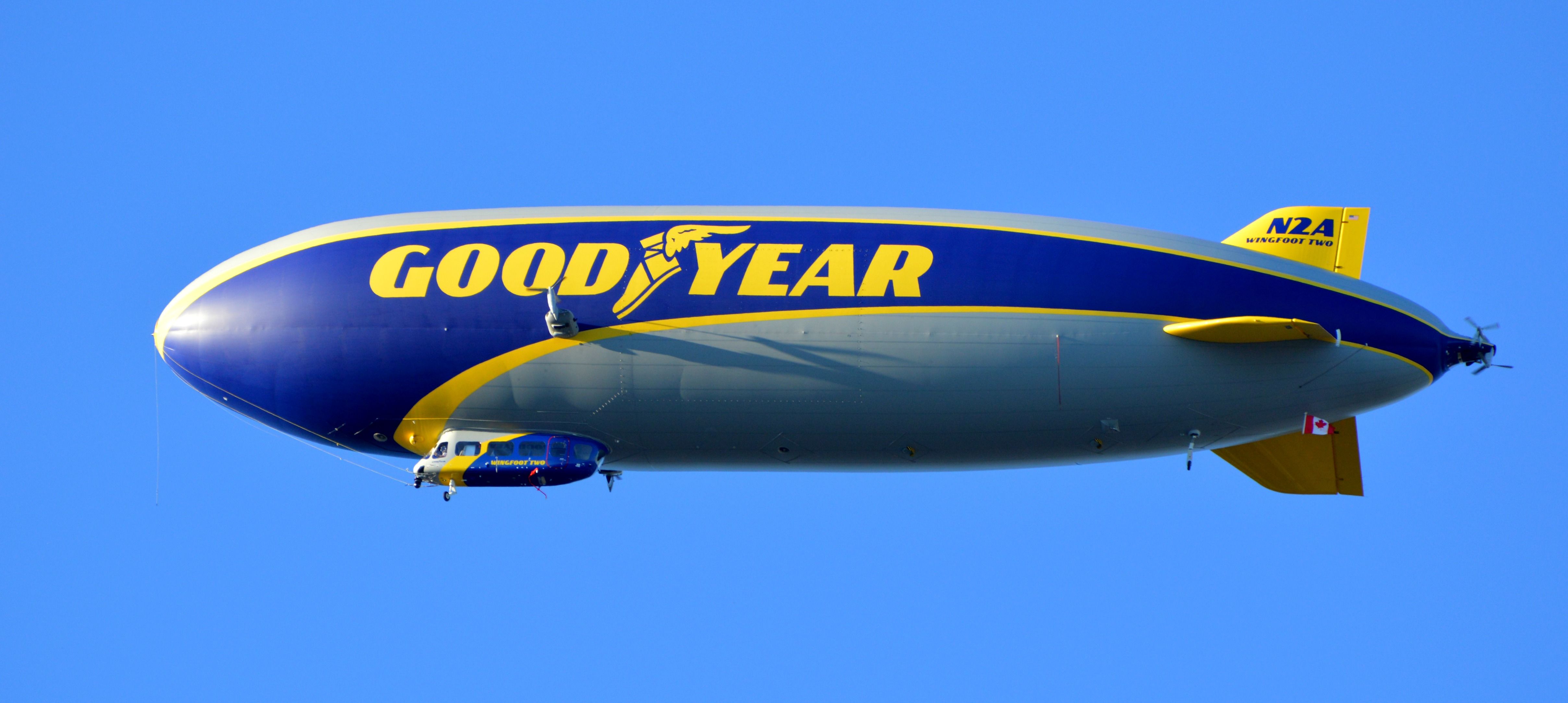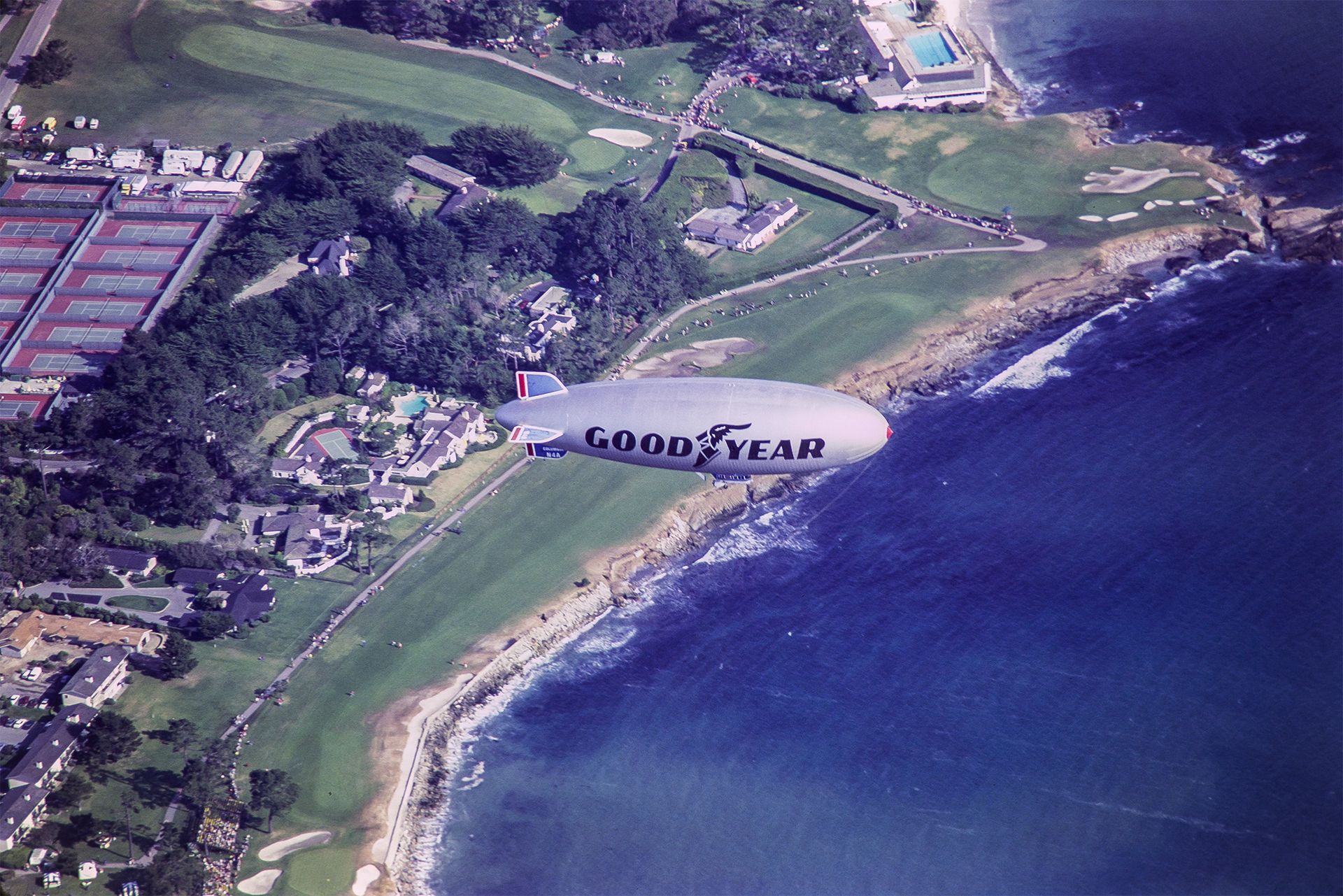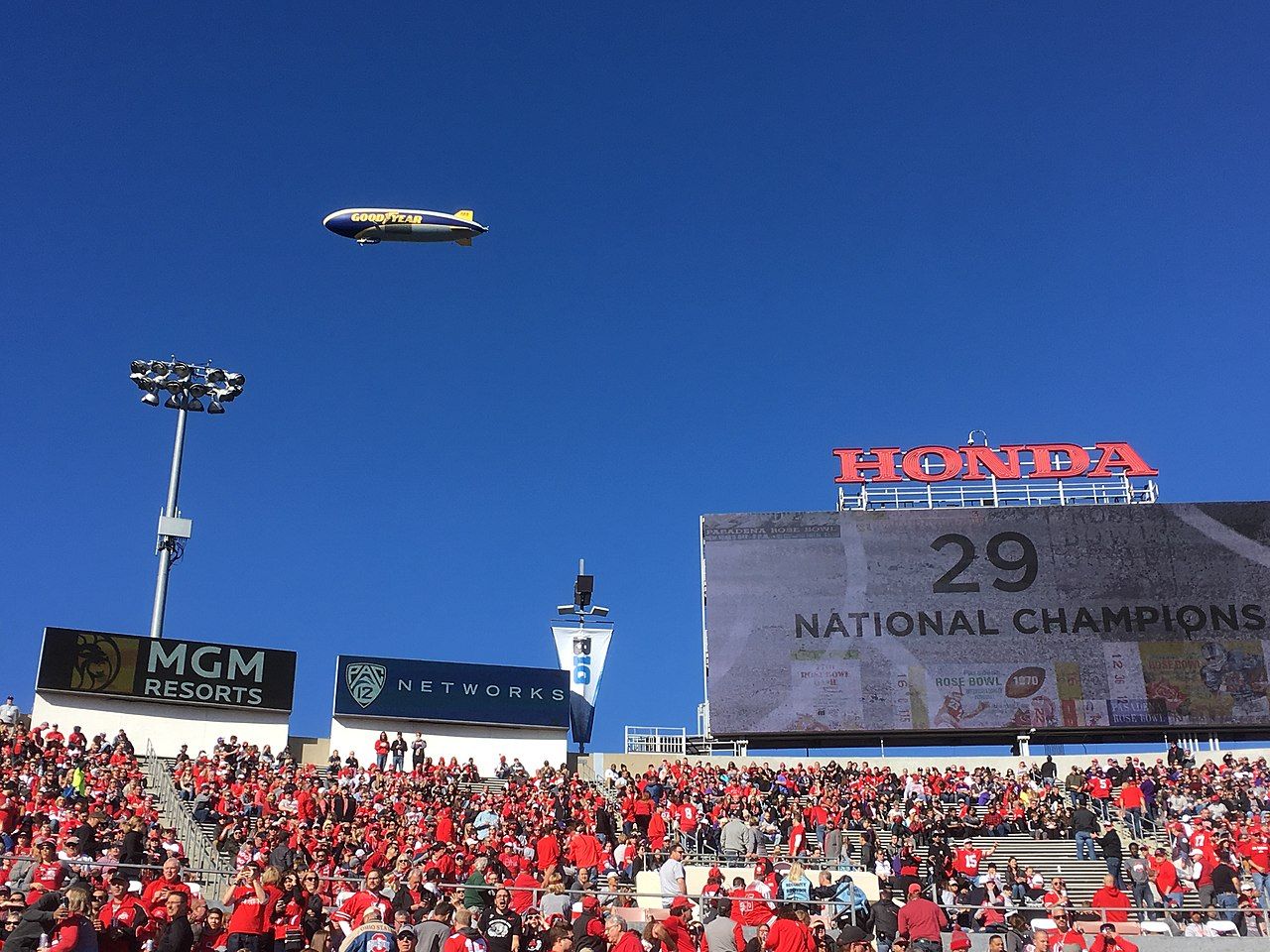Summary
- Goodyear's famous airships are actually zeppelins, not blimps, due to their semi-rigid construction and internal frame.
- The Goodyear Blimp program started in the 1920s and has evolved over the years with new designs and fleet replacements.
- Goodyear currently operates four blimps, offering sightseeing flights in Europe and flying over sporting events in North America. Other companies are also investing in passenger airships for commercial travel.
If you live in certain parts of Europe and North America, you may have noticed a round, colorful object floating through the air. That is the Goodyear Blimp, a semi-rigid airship operated by the Goodyear Tire and Rubber Company.
The company has been operating blimps for nearly 100 years. The iconic blue, yellow, and grey aerial vehicle is well-known for flying slowly over major entertainment events like award ceremonies and sports tournaments. There are currently four Goodyear Blimps operating in North America and Europe, but what is a Goodyear Blimp, and what is their point?
Not actually a blimp
Despite being well known worldwide as the Goodyear Blimp, the Goodyear Tire and Rubber Company's airships are actually zeppelins, not blimps. The difference between the two lies in the construction of the vessel. A blimp is a non-rigid airship, while Goodyear's airship is semi-rigid.
Non-rigid airships have no internal frame. They rely on the internal pressure of the lifting gas and air-filled ballonet bags to maintain their shape. On the other hand, semi-rigid airships have a supporting structure. While the lifting gas also maintains the shape of the main envelope, these airships have an internal rigid lower or upper frame.
Rather than relying on sheer power like the fixed-wing aircraft that we're used to seeing departing significant airports, a Zeppelin gains altitude thanks to its status as a lighter-than-air vehicle. The Zeppelin is filled with non-flammable Helium, giving it its buoyancy. With a small cabin on the aircraft's base, it is maneuvered with fans and several control surfaces.
Want answers to more key questions in aviation? Check out the rest of our guides here.
From blimps to Zeppelins
The Goodyear Tire and Rubber Company was founded in 1898 when America felt the full effects of the Industrial Revolution. After a few years, Goodyear was looking for a way to expand beyond just manufacturing tires, and taking advantage of the revolution, it began operating lighter-than-air balloons and aircraft.
In the early 1920s, Goodyear blimps took to the skies, and what better way to grab people's attention than with a low-flying object branded with your company's name and colors? The program was successful, and between the 30s and 70s, the blimps went through several designs. They were used for various purposes, such as aerial television coverage and early warning radar stations in defense.
The blimps became increasingly popular, flying over major sporting events, and by the 80s, they had started to gain worldwide exposure. The 90s brought a lot of changes. Goodyear's Texas base was closed, and the blimp located there was moved to Wingfoot Lake. Goodyear began redesigning its entire fleet at the turn of the millennium and introduced three new blimps between 2000 and 2010.
Goodyear needed to innovate and modernize its fleet to continue dominating. In 2011, it announced that it was replacing its non-rigid airship fleet with semi-rigid airships built by Germany's Luftschiffbau Zeppelin. The new design allowed the airships to be bigger, and although technically incorrect, Goodyear continued to call them blimps.
Four blimps in operation
Goodyear currently has four 'blimps.' The first of the new generation fleet, Wingfoot One, was launched in 2014. Its three North American blimps, Wingfoot One, Wingfoot Two, and Wingfoot Three, were built and launched between 2014 and 2018.
The fourth fleet member is the Europe blimp, launched in 2020. However, in 2011, the European version crashed near Frankfurt. All three passengers survived, but the pilot sadly lost his life. For nearly a decade, Europe was blimpless, but three years ago, a new Goodyear Blimp took to the skies above the continent.
Where can you see the blimp?
While not flying over sporting events, the European blimp operates sightseeing flights around Friedrichshafen, Lake Constance, Ravensburg, Bonn, Düsseldorf, and Munich in Germany. Depending on the tour, flights last between 45 and 90 minutes, with prices starting from $500 (€470).
The North American blimps continue to fly over sporting events. This month, the airships were at various PGA tournaments in Greensboro, Memphis, Olympia Fields, and Atlanta. However, getting on the Wingfoot blimps is much harder, as rides are by invitation only.
While the yellow, blue, and grey blimps are well-known worldwide, Goodyear is not the only company operating semi-rigid airships. Several firms have been investing in researching and developing passenger airships for commercial purposes. Studies show that they can significantly reduce carbon emissions in air travel, and France's Flying Whales expects to introduce its first airship for commercial flights in 2027.
Have you seen the Goodyear Blimp? Let us know your experiences in the comments!




